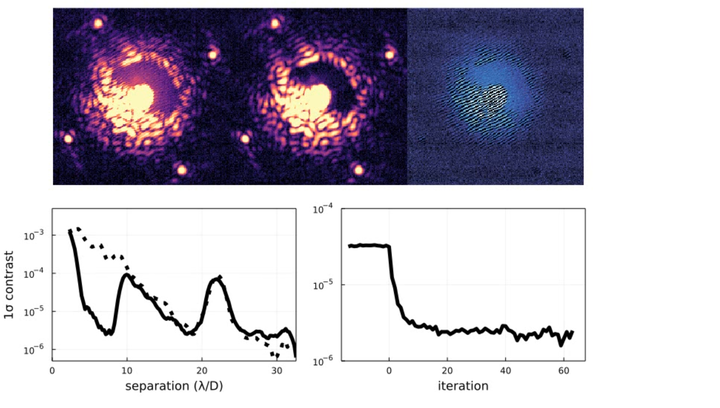Performance of the FAST self coherent camera at the NEW-EARTH lab and a simplified SCC measurement algorithm

Abstract
In order to detect low mass and mature planets inwards of approximately 5 AU, future direct imaging instruments will require precision wavefront control that operates at relatively high speed. The self-coherent camera (SCC) is a promising technique for measuring the wavefront from science images at the focal plane. We present here results from NRC’s NEW-EARTH lab testing of the Fast Atmospheric SCC Technique, a variant of the SCC and its integration with a Lyot-stop Low-Order Wavefront Sensor. We demonstrate correction of quasi-static speckles in a half dark hole reaching raw 1σ contrasts on the order of 5 × 10−7 at 10 λ/D. We also present a simplified process for extracting measurements and/or DM commands from SCC images using a single matrixvector multiply. This testing and development are important steps on the way to the upcoming Subaru Pathfinder Instrument for Detection of Exoplanets and Removal of Speckles and the Gemini Planet Imager’s CAL2 upgrade.
Citation
@inproceedings{thompson2022performance,
title={Performance of the {FAST} self coherent camera at the {NEW-EARTH} lab and a simplified {SCC} measurement algorithm},
author={Thompson, William and Marois, Christian and Singh, Garima and Lardi{\`e}re, Olivier and Gerard, Benjamin and Fu, Qiang and Heidrich, Wolfgang},
booktitle={Adaptive Optics Systems VIII},
volume={12185},
pages={724--735},
year={2022},
organization={SPIE}
}
All images are © SPIE, reproduced here by permission of SPIE for your personal use. Not for redistribution.